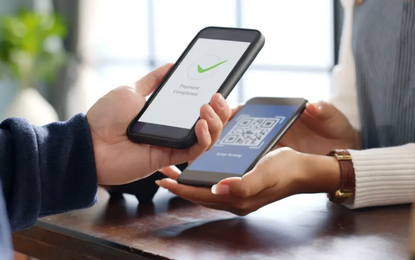

By turning invisible, banks become customer-centric and more focused on helping them make better decisions without interrupting their journey
The main challenge for the industry is to make users’ financial lives easier. From easy payments to automatic savings, the trend is towards improved usability.
The term invisible finance alludes to the fact that service channels and means of payment are no longer protagonists, since financial services are embedded into the lives of customers in such a way that the explicit presence of banks is not noticeable.
Consider a consumer who is making a large purchase online. It is very likely that the platform will show them financing options and/or how to obtain a quick loan to finance the acquisition. Through "invisible banking,” evaluation engines review the buyer's credit history instantly and offer them tailor-made credit.
If we go back a decade, obtaining a loan for a medium-sized or large purchase required showing credentials to a bank, several other steps and at least a couple of visits to the branch. That scenario no longer reflects the way customers want to consume financial products or the way banks do business.
Therefore, invisible banking is a trend that will continue to grow and diversify, supported by contactless payments, robust digital channels and biometrics, which will even allow customers to ask their digital assistant, such as Alexa or Siri, to book tickets for a movie or make a household purchase.
All these virtual services will increasingly come together in superapps or multipurpose applications, where the combination of different commercial offering—financial and other categories—take precedence, reshaping the way we consume and elevating the experience of the user on the other side of the screen.
And, in this sense, invisible banking offers its greatest benefit: customer-centricity. Thanks to technology, institutions are integrated into multiple platforms—their own and those of third parties—and that way they merge into their users’ lifestyles.
This gives institutions a cross-cutting presence and opens up new sources for data collection, in order to create hyper-personalized and smart experiences.
Banking as a Service (Baas) and embedded finance are fundamental to this process. They allow financial offerings to be placed on other players’ front ends (apps or portals), with the intention of selling banking products on a massive scale.
Many institutions, however, fear that these arrangements will dilute their brand and identity, since the services are often packaged as a white label. However, the focus is on the consumer and their journey, so banks can stay relevant by personalizing products that are predictive and truly tailored to their needs.
Invisible payments are just the opening door. Thanks to underlying technologies such as APIs, cloud and data analytics, customers can make purchases without the need for physical payment means such as cash or cards, paying for services or products in a manner that’s simpler and more direct.
We are talking about payments with QR, biometrics or contactless, that only require a card, mobile device or watch to connect to the payment terminal—no further financial details are required. These payments can also be made using fingerprint or facial recognition on tablets or phones and soon with the user's iris or voice.
These techniques eliminate any doubts about security because, to date, they represent the safest authentication method due to their unique, inimitable features for managing payments.
The customer stores their data only once in the cloud, where it is available and safe to use for travel applications, subscription payments or online purchases.
Last year, payments using mobile devices, apps and wallets experienced across-the-board growth compared with 2020, according to a Minsait study of payment methods in Latin America and Europe.
The research also found that, in all the countries surveyed, the use of contactless cards using NFC (Near Field Communication) antennas displaced those requiring inserting into the terminal; usage was led by the United Kingdom and Spain, with 90.2% and 87.6% of payments respectively.
As we have seen, the key to invisible finance is frictionless processes: the reduction of steps to achieve a goal. With that in mind, investing in convenient, agile, and easy technology and processes is a must.
Join our online community and stay up to date with the latest news from the world of technology.